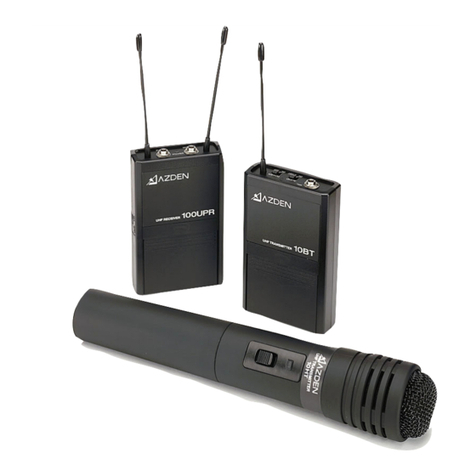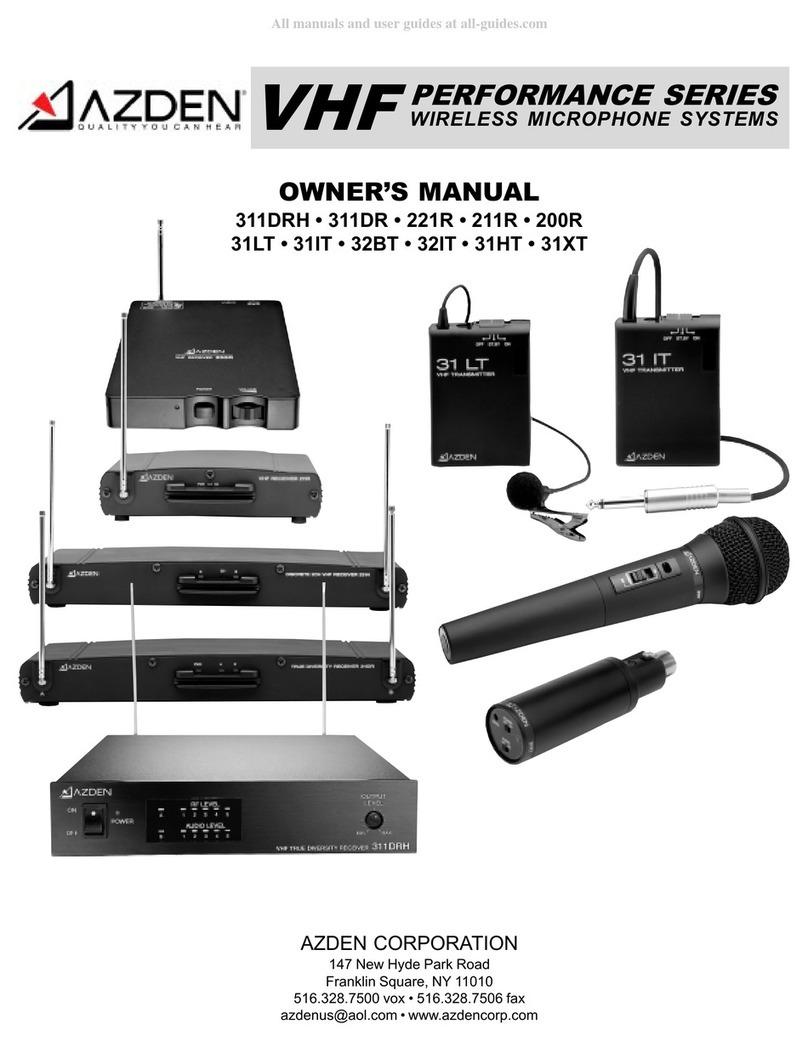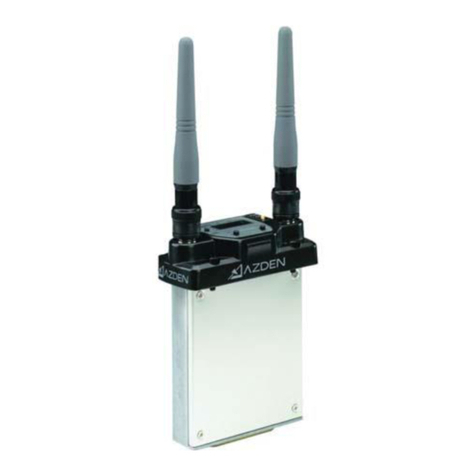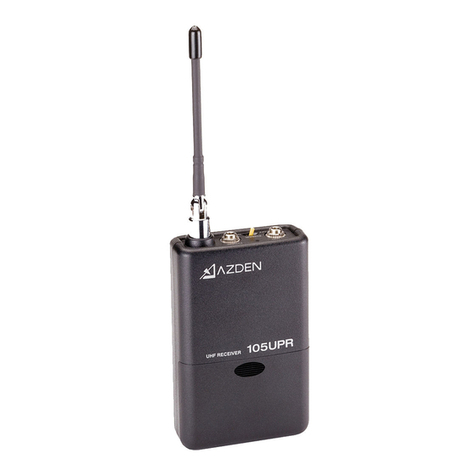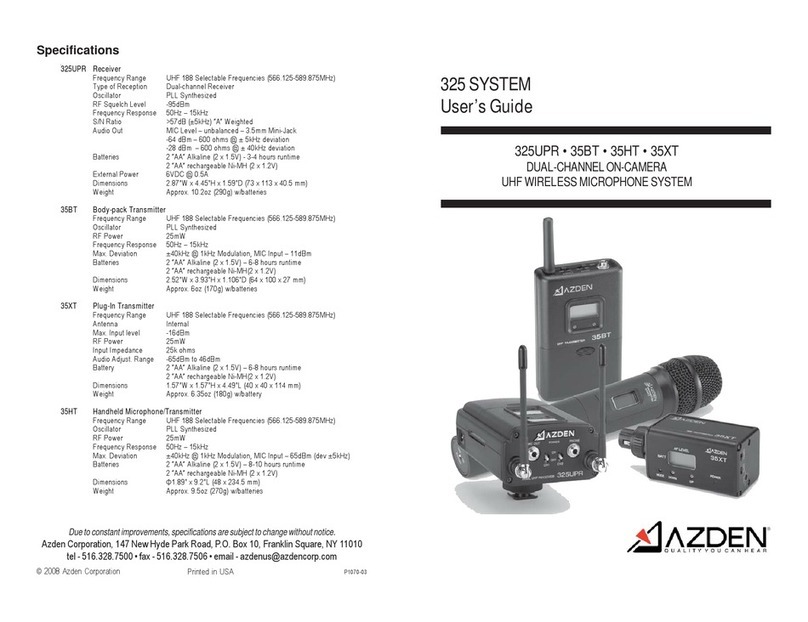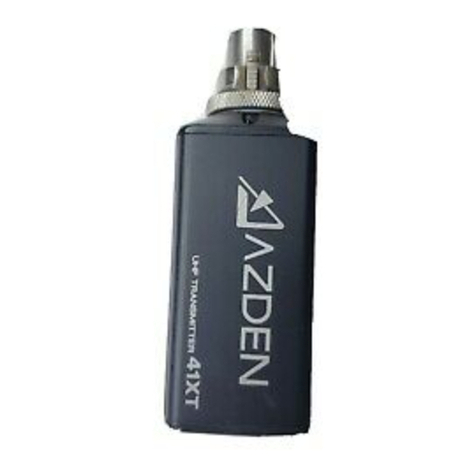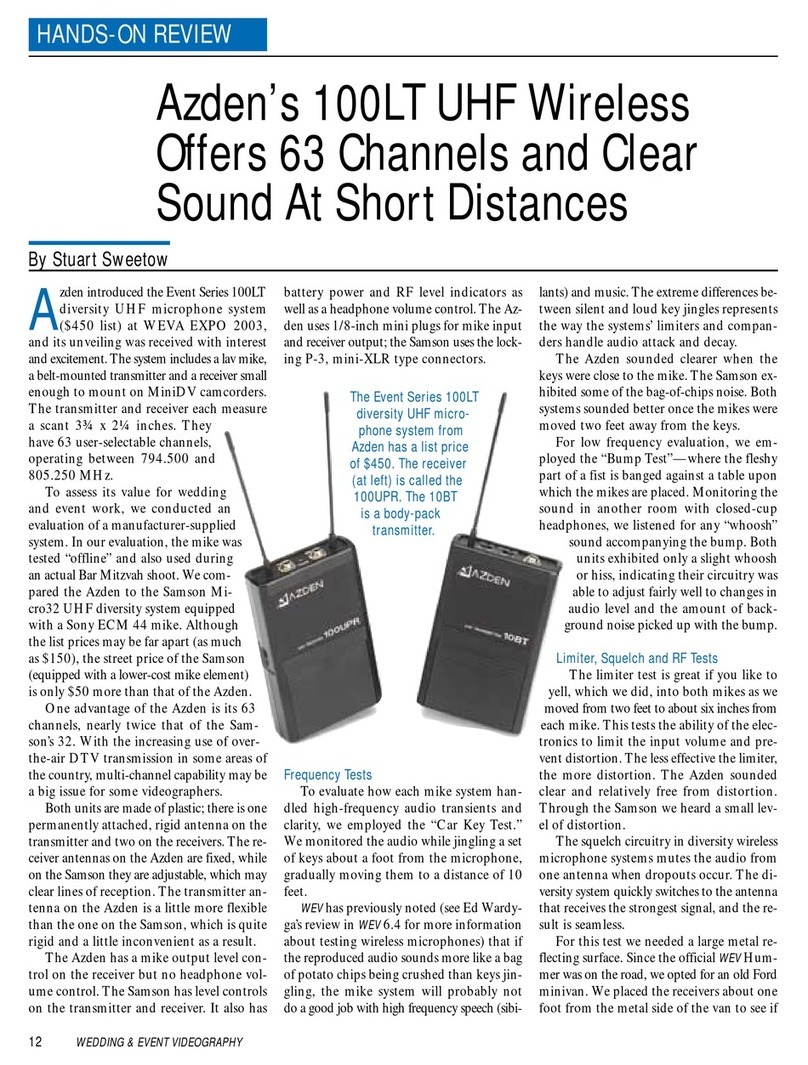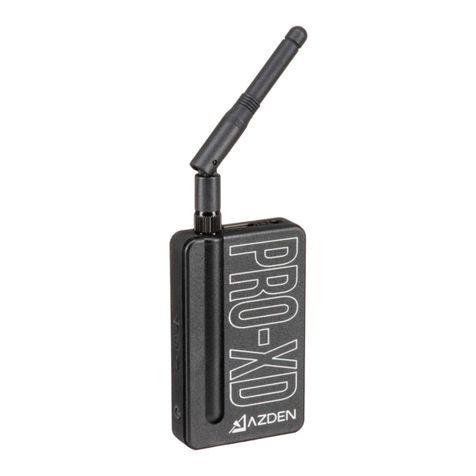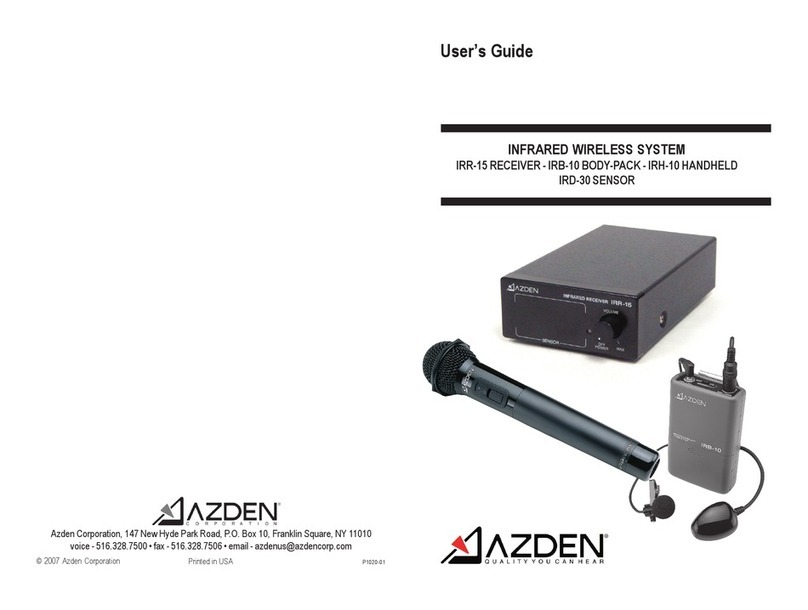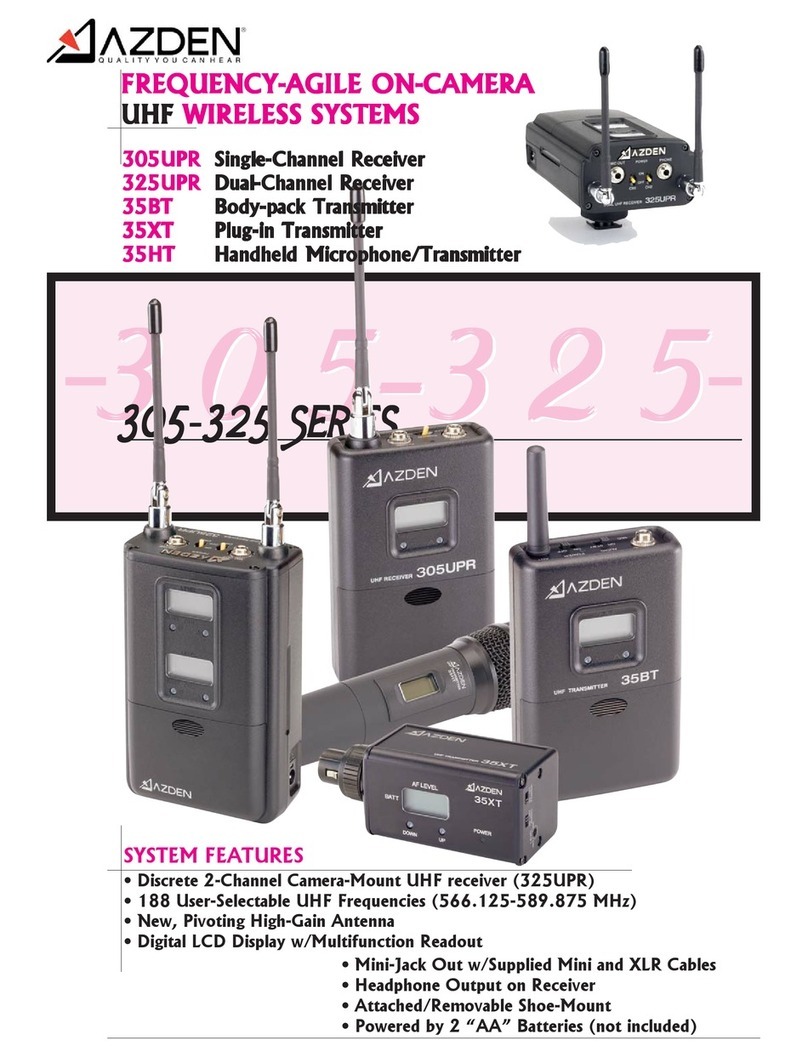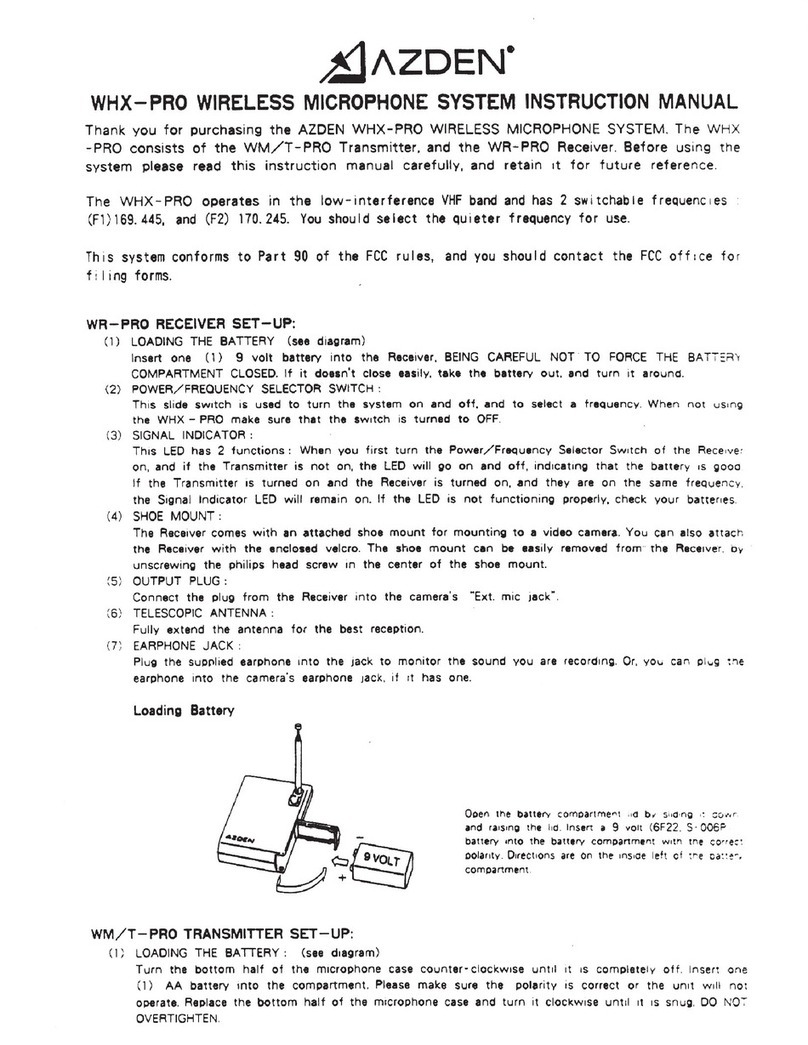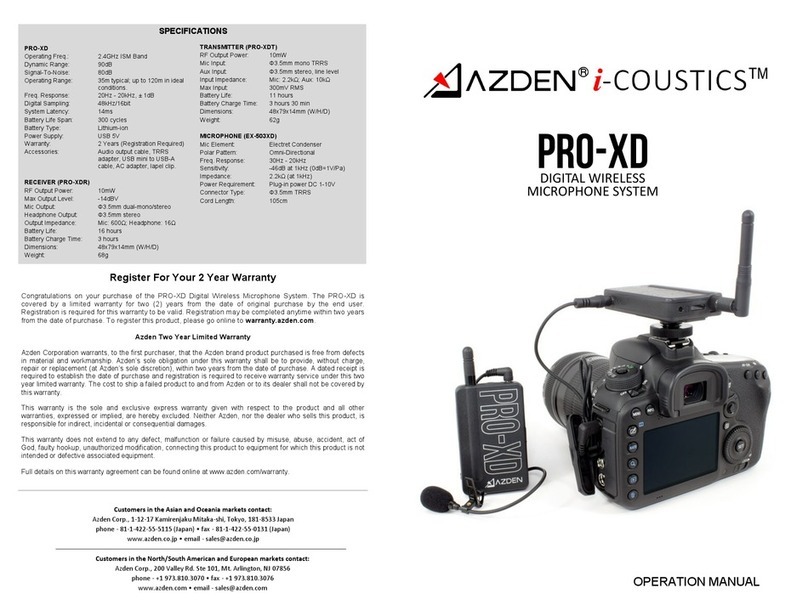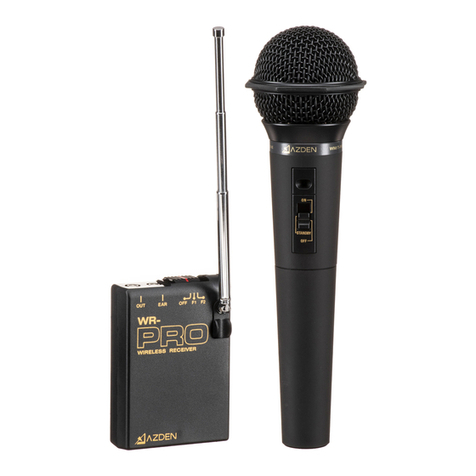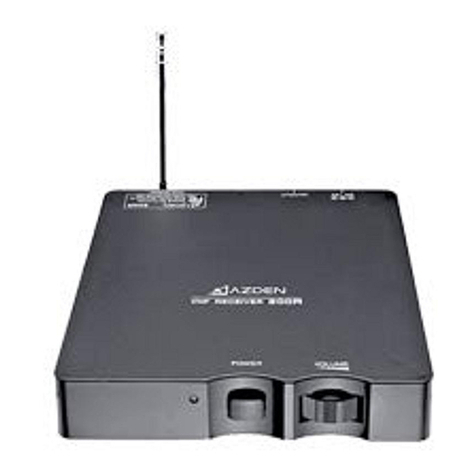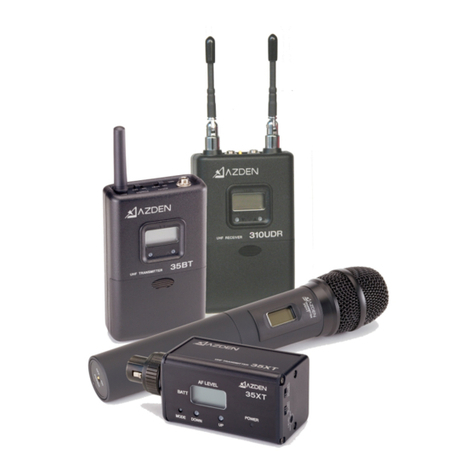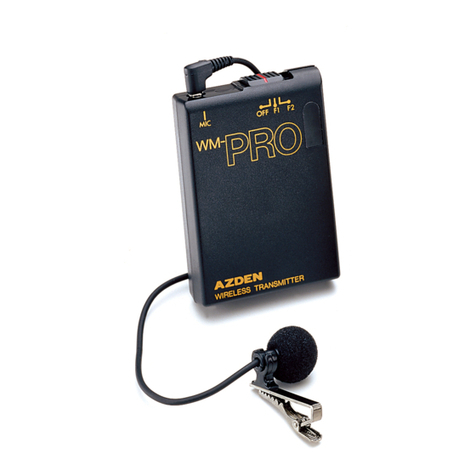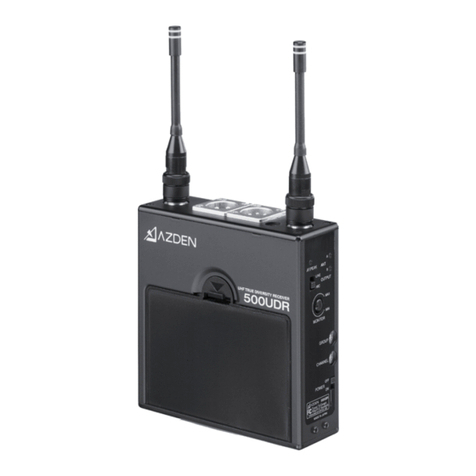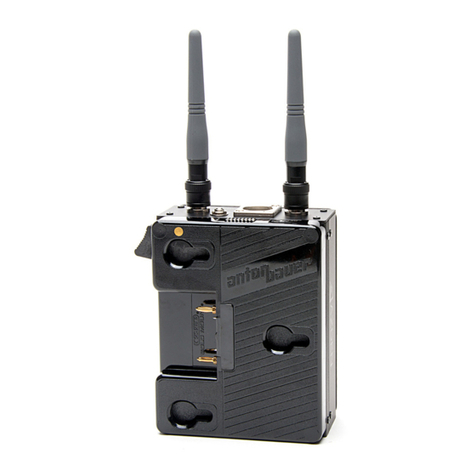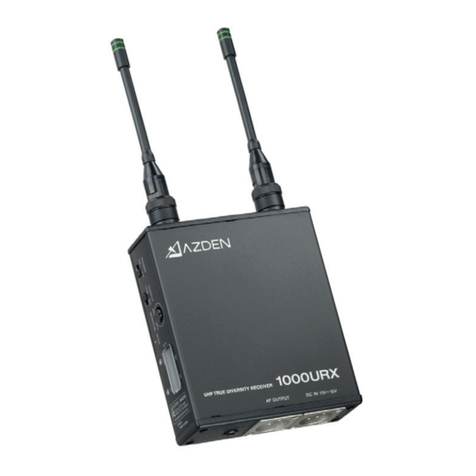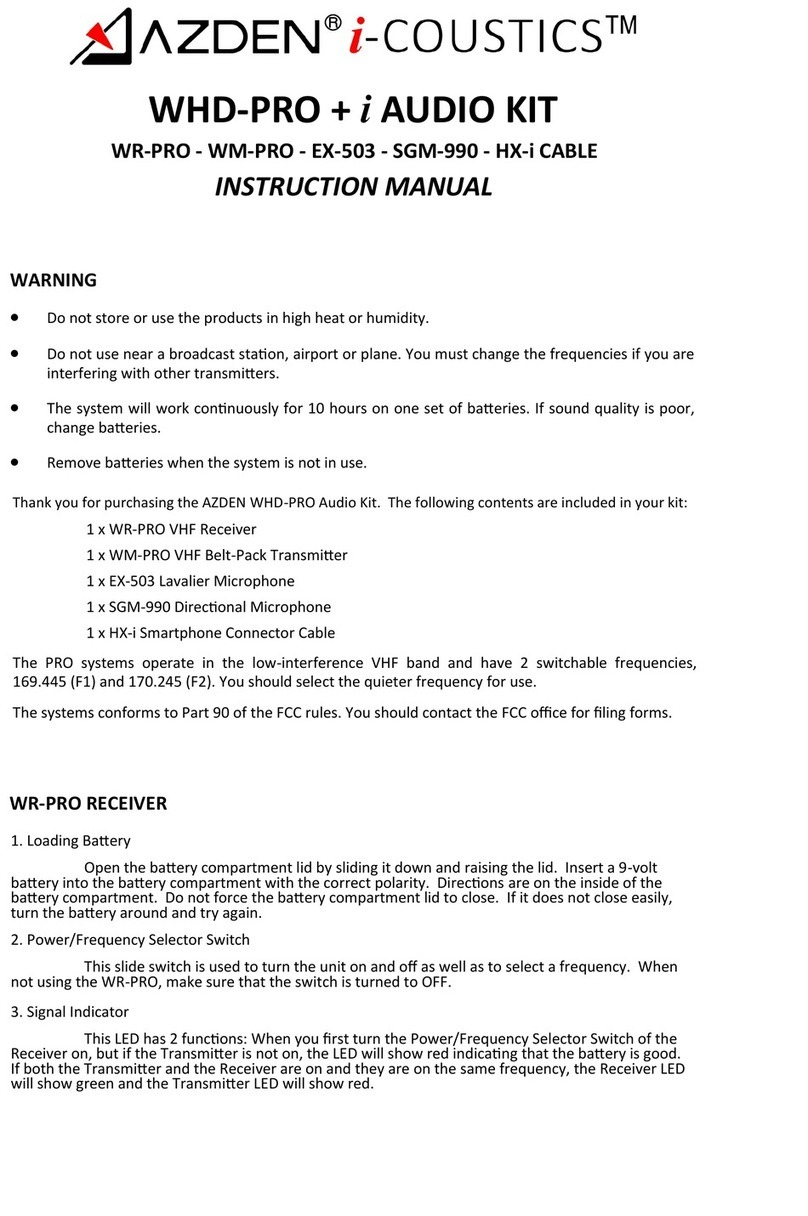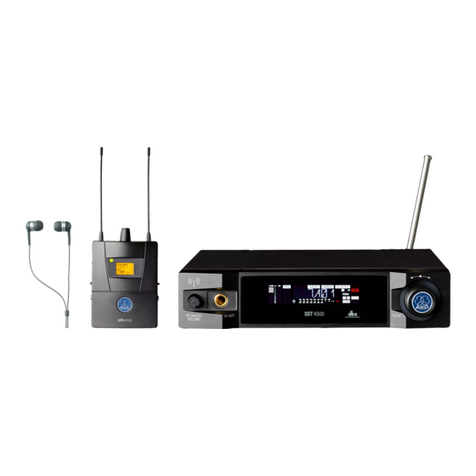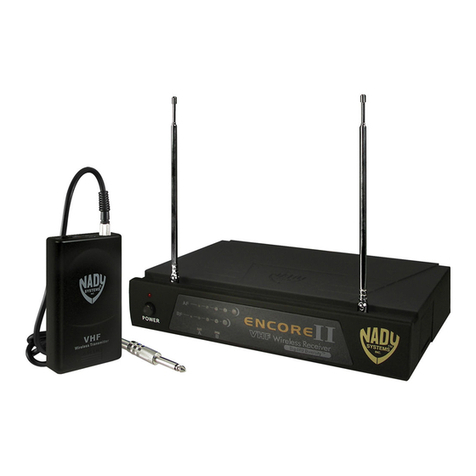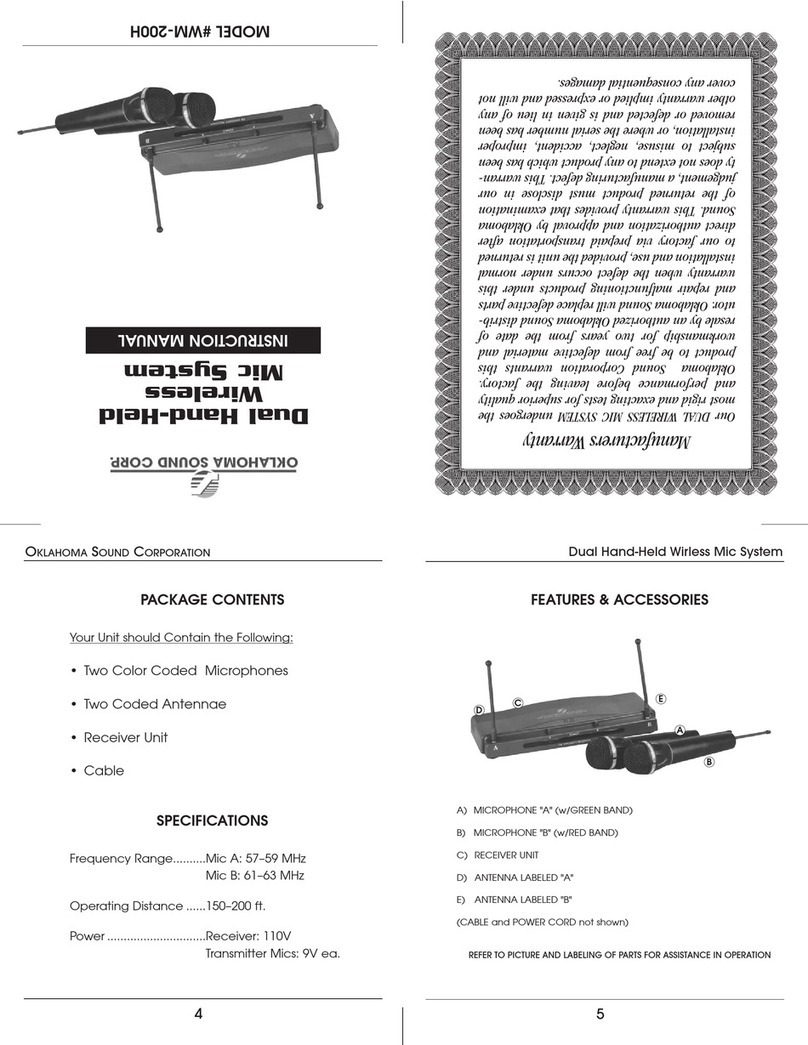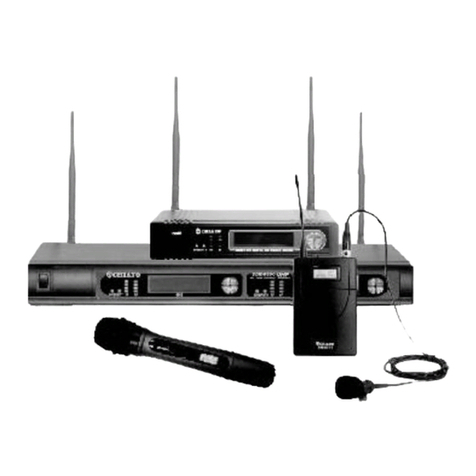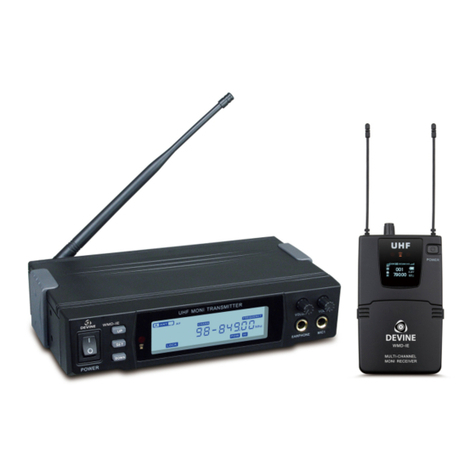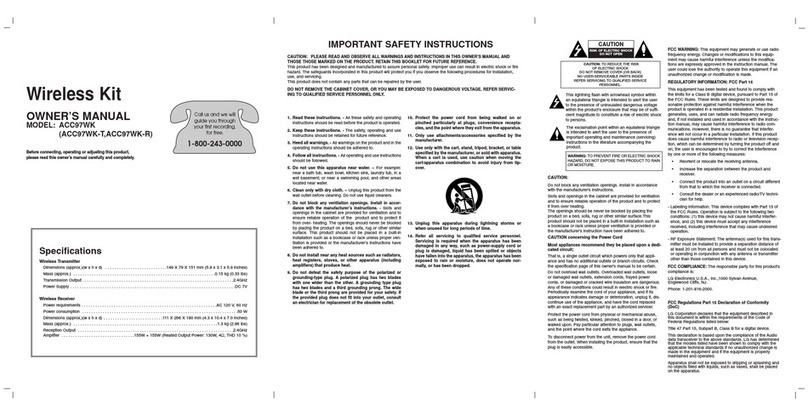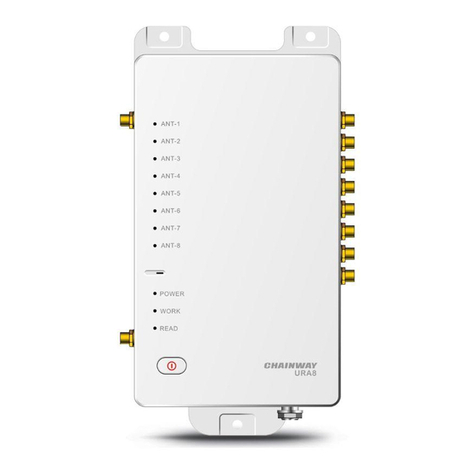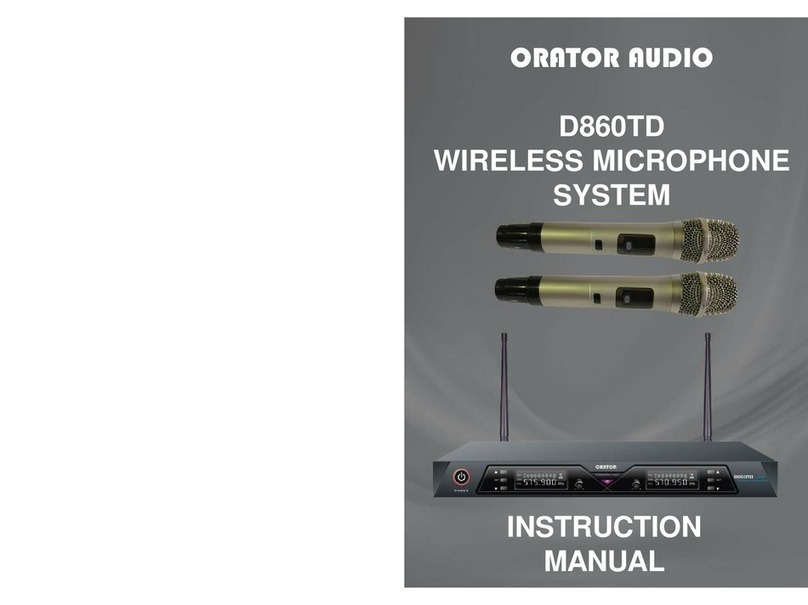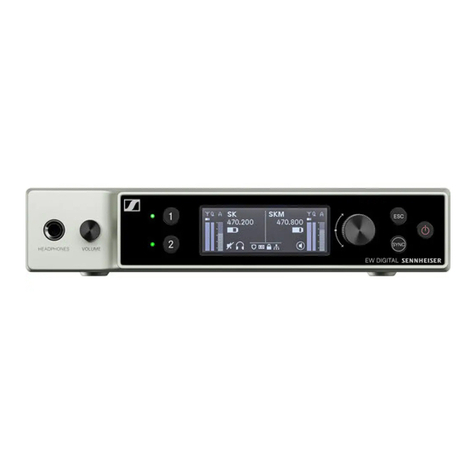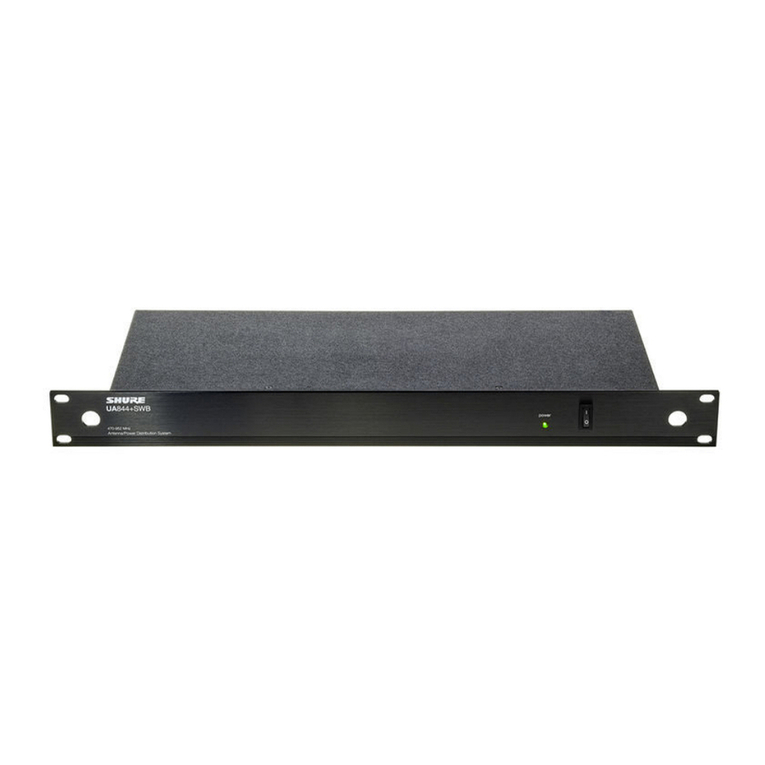15. MIC Input Jack
Plug the supplied EX-503L Lavalier Microphone into the MIC input jack. In addition to the EX-503L,
other lapel and/or headset microphones with 3.5mm mini plug may also be used with the 35BT.
16. AUDIO Switch
It is best to set the AUDIO switch to “STBY” (standby) prior to first turning the POWER switch “ON”.
When you are ready to begin transmitting, turn the AUDIO switch ON. The STBY position acts as a
mute function that maintains the RF signal but turns off the audio.
17. LCD Display
Multifunctional display shows battery life, audio level and frequency selection. Refer to “LCD Display
Readouts” in this manual for further details.
18. CHANNEL UP/DOWN Buttons
Press the UP and DOWN buttons to change the transmission frequency. Group/Frequency numbers
are shown on the LCD. Keep the button pressed down to fast forward through numbers. Once the
desired Group/Frequency numbers are selected on the transmitter, set the receiver to match. This
functions the same on 35XT and 35HT transmitters if they are included with your kit.
12. Battery Compartment
Remove the battery compartment lid by sliding it down. Install two fresh alkaline “AA” batteries. Make
sure the battery polarity is correct as marked inside the battery compartment.
13. MIC input Level Control
Located inside the battery compartment, this control enables you to adjust the input level of the
microphone. Using the supplied tool, also found inside the battery compartment, turn the dial
clockwise to increase, or counterclockwise to decrease the input level.
14. POWER Switch
Switches the 35BT Transmitter “ON” or “OFF”
design, the audio from each channel is output discretely, so that you will get audio from channel 1 on
the left side, and audio from channel two on the right side. This makes separate editing in post
production of each speaking person possible.
For 3-pin XLR inputs: Use the supplied mini-to-dual XLR cable. Plug the mini-plug end of the cable
into the 330UPR Receiver (use the screw-down sleeve to secure it to the receiver) and plug the XLR
ends into the microphone inputs on the video camera. Ch. 1 is on the “Tip” and Ch. 2 on the “Ring”.
9. Battery Compartment
Remove the battery compartment lid by sliding it down. Install two fresh alkaline “AA” batteries. Make
sure the battery polarity is correct as marked inside the battery compartment. Alkaline batteries will
perform best, but Azden’s 1HR-3U rechargeable Ni-MH batteries may also be used.
10. DC 6 Volt Input
An optional AC power adaptor/battery charger for Azden’s 1HR-3U rechargeable Ni-MH batteries is
available for the 330UPR. Azden’s part number for this unit is BC-29. Contact Azden or an Azden
dealer for more information.
11. Shoe Mount Assembly
First loosen the thumb wheel by turning it counter-clockwise. Slide the square foot of the shoe mount
assembly into your camera’s shoe mount slot. Secure into place by tightening the thumbwheel by
turning it clockwise until snug. Do not over tighten.
17
18 15 16 14
5
35BT Body-Pack Transmitter
12
13
1. Antennas
For the best reception, the antennas should be pointed in an upward position.
2. Power Switch for each Channel
There are separate power switches for Channel 1 and 2.
3. Universal LCD Display for Ch. 1 and 2
Multifunctional display shows battery life, signal strength, channel selection and frequency selection.
Refer to “LCD Display Readouts” in this manual for further details.
4. CHANNEL UP/DOWN Buttons
To change the Group/Frequency number of each channel, use a small, pointy object to press the UP
or DOWN button until the desired number is shown on the LCD Display. Keep the button pressed
down to fast forward the channel numbers. Once the desired Group/Frequency numbers are selected
on the receiver, set the transmitters to match.
5. DISP 1 / 2 Button
Press to switch the LCD Display between Channels 1 and 2.
6. LCD Display MODE Switching Button
Press to switch the LCD Display to show either the Group and Frequency numbers or the actual
frequency in MHz being used on each channel.
7. PHONE Jack
This output allows you to monitor sound and is intended for use with headphones. If a stereo
headphone is used, Ch. 1 will be heard on the left and Ch. 2 on the right.
8. MIC OUT Jack
The microphone output is a 3.5 mm TRS mini-jack and should only be connected to microphone
inputs. Your 330 kit is supplied with both a mini-to-mini and a mini-to-dual XLR cable.
For mini-jack microphone inputs: Use the supplied mini-to-mini cable. Plug one end of the cable into
the 330UPR Receiver and the other end into the microphone input of the video camera. Note: by
